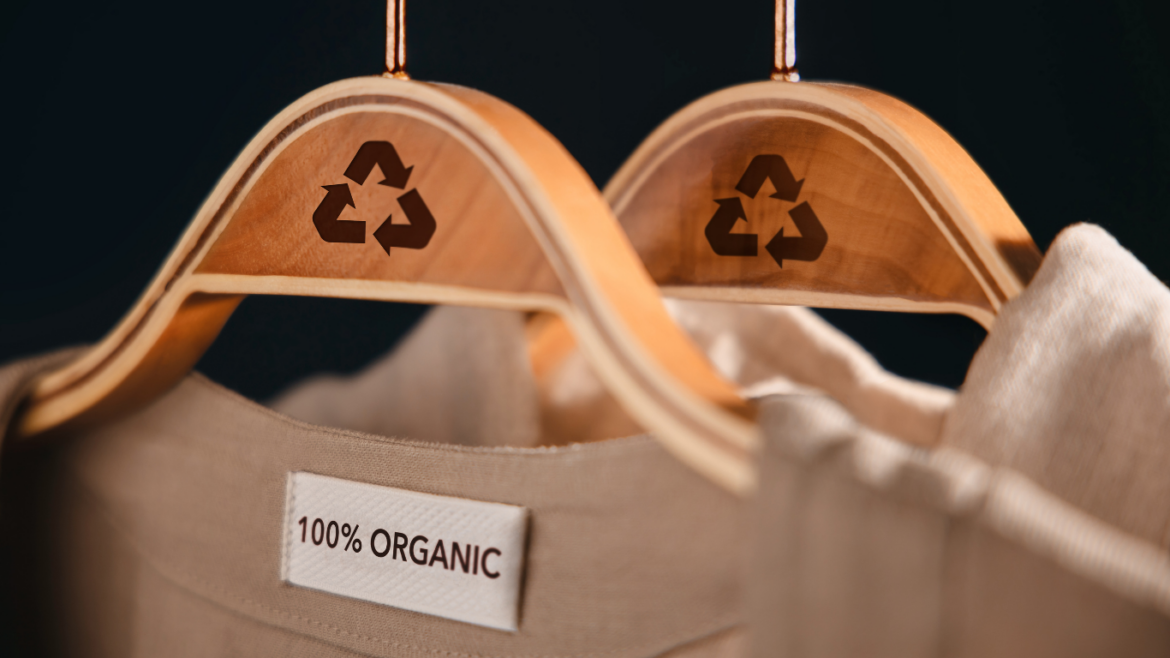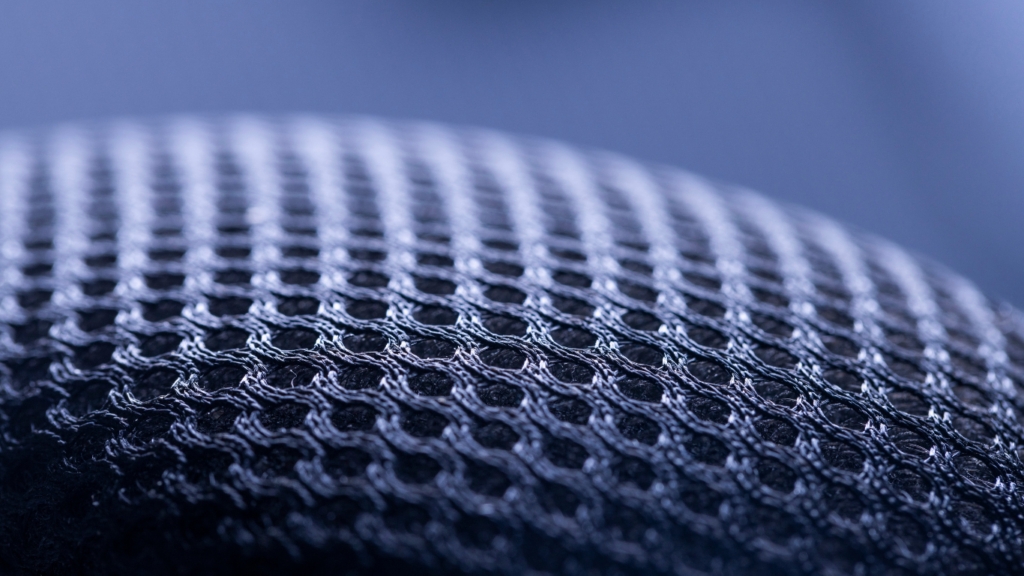In today’s fast-evolving manufacturing landscape, innovation isn’t a luxury—it’s a necessity. As textile producers face increasing pressure to boost productivity, cut costs, and maintain precision, one solution is proving itself indispensable: semi-automatic textile machines. These smart, efficient systems are revolutionizing how factories operate—bridging the gap between manual control and full automation.
Let’s dive into how semi-automatic machinery is transforming textile production lines around the world, and why forward-thinking manufacturers are weaving it into the fabric of their future.
The Rise of Smart Manufacturing in Textiles
Over the last decade, the textile and garment industry has undergone a significant technological shift. From digitized workflows to AI-enhanced design, the entire supply chain is changing shape—and fast. Semi-automatic textile machines represent a pivotal step in this evolution.
They offer the best of both worlds: human control and machine precision. Operators maintain oversight, while machines handle repetitive tasks with consistent accuracy. The result? Fewer errors, faster output, and less downtime.
Why “Semi-Automatic” Is the Sweet Spot
You might be wondering—why not go fully automatic? While full automation certainly has its place in large-scale operations, semi-automatic systems often prove more practical and cost-effective for small to mid-sized manufacturers.
Here’s why:
- Flexibility: Semi-automatic machines adapt quickly to different fabric types, roll sizes, or production goals without requiring complex reprogramming.
- Cost Efficiency: They’re more affordable than fully automated systems—both in upfront investment and maintenance.
- Precision and Control: Operators can intervene when needed, minimizing mistakes and maximizing material utilization.
When integrated strategically, these machines deliver a near-instant upgrade to any production line.
Real-World Impact: Boosting Output Without Compromising Quality
Let’s talk numbers. In many cases, textile producers using semi-automatic slitting or cutting machines have reported:
- Up to 40% increase in production efficiency
- 25% reduction in material waste
- Significantly lower labor fatigue and error rates
This is especially critical when working with high-value or delicate fabrics, where precision isn’t optional—it’s everything.
Svegea, a trusted innovator in textile machinery, has been at the forefront of this shift. Their range of semi-automatic textile machines offers cutting-edge features that balance performance with user-friendly operation. Whether you’re slitting rolls, trimming edges, or cutting fabric panels, Svegea’s equipment ensures precision without the steep learning curve.
Key Benefits for Manufacturers
Still wondering if it’s the right move for your operation? Here are five compelling benefits of semi-automatic textile machines you can’t ignore:
1. Increased Throughput
By automating repetitive motions while keeping decision-making in human hands, these machines dramatically speed up production without sacrificing quality.
2. Reduced Operational Downtime
Thanks to straightforward interfaces and intuitive controls, troubleshooting and adjustments can be made quickly, keeping your lines running smoothly.
3. Better Resource Management
Semi-automatic systems optimize how material is handled and processed, leading to lower waste and higher yield.
4. Enhanced Product Consistency
Uniform cutting, slitting, and trimming mean fewer reworks and returns.
5. Safer Work Environment
These machines eliminate many of the risks associated with manual cutting tools, creating a safer space for your workforce.
Meet the Machines Making It Happen
Svegea’s lineup of semi-automatic machines includes slitting systems, band knife machines, and edge trimmers—all engineered for ease of use and long-term reliability. Designed and manufactured in Sweden, these machines combine high-performance mechanics with modern design standards.
Each model is created with specific applications in mind, including:
- Roll-to-roll precision slitting
- Multilayer fabric processing
- Durable textile cutting with minimal fabric distortion
Whether you’re producing garments, upholstery, technical fabrics, or industrial textiles, Svegea offers purpose-built equipment to meet your unique needs.
What Industry Leaders Are Saying
Manufacturers across Europe and Asia who’ve adopted Svegea’s semi-automatic machines are seeing tangible improvements not just in throughput, but in staff satisfaction and operational control.
“We upgraded to a Svegea roll slitting machine last year, and the difference was immediate,” one production manager shared. “The machine paid for itself in less than six months through time saved and reduced waste.”
These are results that any manufacturer can get behind.
Future-Proofing Your Production Line
With labor shortages, rising material costs, and fluctuating market demands, investing in adaptable machinery is more critical than ever. Semi-automatic systems give you the edge today, while preparing your facility for the continued rise of smart manufacturing.
They also allow for easier integration with upstream and downstream processes, including material handling systems, labeling, and packaging, streamlining your entire workflow.
Ready to Step Up?
If you’re ready to enhance efficiency without losing control, Svegea’s semi-automatic textile machines could be your perfect fit. Designed for manufacturers who need to move fast, stay lean, and deliver quality with every yard, Svegea solutions are here to keep your production future-ready.
📩 Contact Håkan Steene today at h.steene@svegea.se to learn more, get product specs, or schedule a live demo.
You can also explore the range online here: https://svegea.se/product-category/roll-slitting-machines/semi-automatic-roll-slitting-machines/
The textile industry is transforming. With growing concerns about environmental impact, manufacturers are shifting towards sustainable textile practices. From reducing waste to adopting energy-efficient machinery, the industry is embracing innovation to create a greener future.
The Rise of Circular Fashion
Circular fashion is revolutionizing the textile industry. Instead of the traditional linear model, where clothes are made, used, and discarded, circular fashion promotes recycling and reusing materials. Brands are now designing garments with longevity in mind, using biodegradable fabrics and closed-loop production systems.
Key Circular Fashion Strategies:
-
- Recycling & Upcycling: Old textiles are repurposed into new garments, reducing landfill waste.
- Closed-Loop Production: Materials are continuously reused, minimizing resource depletion.
- Biodegradable Fabrics: Natural fibers like organic cotton and hemp decompose without harming the environment.
Zero-Waste Manufacturing: Eliminating Textile Waste
Traditional textile production generates excessive waste. However, zero-waste manufacturing aims to eliminate fabric scraps and optimize material usage.
How Zero-Waste Manufacturing Works:
-
- Precision Cutting: Advanced machinery ensures minimal fabric waste.
- Fabric Optimization: Designers create patterns that maximize fabric efficiency.
- Waste Repurposing: Leftover materials for accessories or insulation.
Eco-Friendly Dyeing Techniques: Reducing Water & Chemical Usage
Dyeing is one of the most polluting processes in textile manufacturing. Fortunately, eco-friendly dyeing techniques are emerging to reduce water consumption and chemical waste.
Sustainable Dyeing Methods:
- Natural Dyes: Extracted from plants and minerals, these dyes are biodegradable.
- Waterless Dyeing: Innovative technologies like CO₂ dyeing eliminate water usage.
- Low-Impact Dyes: Require fewer chemicals, reducing environmental harm.
Automation & Advanced Machinery: Reducing Energy Consumption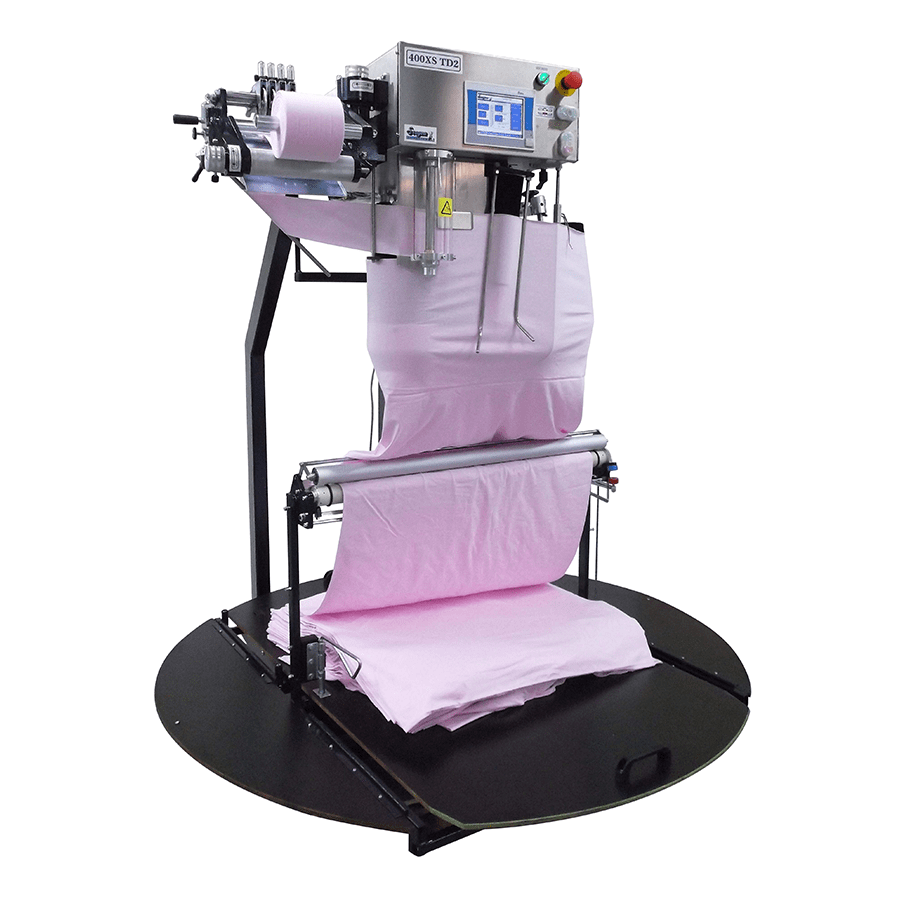
Automation is reshaping textile manufacturing by driving smarter, more sustainable operations. With advanced machinery and AI-powered systems, manufacturers reduce energy consumption, cut material waste, and boost productivity. These technologies fine-tune power usage to lower carbon footprints while delivering consistent speed and precision. By minimizing errors and maximizing efficiency, automation gives textile producers a competitive edge and a cleaner path forward.
Sustainable Textile Manufacturing
Svegea is at the forefront of sustainable textile production. Their innovative machinery enhances efficiency while reducing environmental impact. By integrating automation and precision engineering, Svegea helps manufacturers adopt greener practices without compromising quality.
For more information on sustainable textile manufacturing and product demos, contact Hakan Steene at h.steene@svegea.se.
The textile industry is undergoing a digital revolution, and AI in textile manufacturing is at the forefront of this transformation. Artificial intelligence reshapes how textiles are created, manufactured, and distributed, from optimizing design processes to enhancing production efficiency.
AI in Textile Design: Innovation Meets Creativity
AI is revolutionizing textile design by enabling faster, smarter, and more efficient pattern-making. Designers now use AI-powered tools to generate intricate patterns, predict fashion trends, and customize designs based on consumer preferences.
How AI Enhances Textile Design:
-
- Automated Pattern Generation: AI algorithms analyze vast datasets to create unique textile patterns.
- Trend Prediction: Machine learning models forecast upcoming fashion trends, helping designers stay ahead.
- Customization: AI-driven tools allow brands to personalize designs based on customer preferences.
AI in Textile Production: Efficiency and Precision
AI is streamlining textile production by automating processes, reducing waste, and improving quality control. Manufacturers are integrating AI into machinery to optimize operations and enhance productivity.
Key AI Applications in Textile Production:
AI is transforming textile production through targeted, high-impact applications. Automated  fabric inspection systems now use advanced vision technology to identify defects with precision, ensuring only high-quality materials move forward in the process. On the factory floor, smart manufacturing machines continuously adjust their settings in real time, maximizing efficiency and minimizing downtime. Meanwhile, AI-driven supply chain tools analyze demand patterns and guide resource allocation, keeping operations agile and responsive.
fabric inspection systems now use advanced vision technology to identify defects with precision, ensuring only high-quality materials move forward in the process. On the factory floor, smart manufacturing machines continuously adjust their settings in real time, maximizing efficiency and minimizing downtime. Meanwhile, AI-driven supply chain tools analyze demand patterns and guide resource allocation, keeping operations agile and responsive.
AI-Driven Innovations in the Textile Industry
AI is not just improving efficiency—it’s driving groundbreaking innovations in textile production.
Examples of AI-Driven Innovations:
-
- AI-Powered Smart Textiles: Fabrics embedded with AI sensors for enhanced functionality.
- Predictive Maintenance: AI anticipates machine failures, reducing downtime.
- Eco-Friendly AI Solutions: AI optimizes dyeing processes to minimize environmental impact.
The Future of AI in Textile
AI is transforming the textile industry, making design and production more efficient, sustainable, and innovative. As AI continues to evolve, manufacturers and designers must embrace these advancements to stay competitive.
For more information on AI in textile manufacturing and product demos, contact Hakan Steene at h.steene@svegea.se.
In the competitive garment and textile manufacturing world, efficiency and precision are paramount. Svegea of Sweden, a leader in textile machinery, offers cutting-edge solutions that transform production processes, ensuring higher ROI and safer operations.
Efficiency Meets Innovation
Svegea’s machines are designed to streamline operations and reduce waste. The EC300, known for its precision, ensures consistent quality and faster production times. The Tube Sewing Unit 200A simplifies the creation of bias binding by sewing open fabric into continuous tubular pieces. This innovation minimizes operator assistance while maintaining high productivity.
Adding to their achievements, Svegea received the prestigious New Technology Innovation Award at Texprocess 2023, recognizing the innovative and sustainable design of their textile machinery. Their solutions, such as the award-winning EC-450XF Collarette Cutting System, set benchmarks for precision, efficiency, and eco-friendly manufacturing practices. 
Versatility in Production
Svegea’s Bias-Cutting Systems are ideal for slitting, sewing, and rolling bias-cut fabrics. These systems handle various fabric types, ensuring strong and stretchable materials for diverse applications. Roll Slitting Machines, such as the FA600, offer fully automated solutions for cutting materials like PVC, polyester, and non-wovens.
Customized Solutions for Your Unique Needs
Every garment manufacturer has unique production requirements, and Svegea understands that one size doesn’t fit all. Their ability to customize textile machines to suit your specific needs ensures smarter, more efficient operations. Whether it’s tailoring machinery to fit fabric types, production volumes, or unique manufacturing goals, Svegea provides solutions that seamlessly integrate into your existing workflows. This flexibility makes their machines a smart investment for companies looking to maximize efficiency and adaptability.
Safety and Sustainability
Modern textile machinery prioritizes operator safety and environmental sustainability. Svegea’s machines incorporate intelligent sensors and energy-efficient designs, reducing workplace hazards and supporting eco-friendly practices.
Why Invest in Textile Machinery?
Acquiring advanced machinery is not just an expense—it’s a strategic investment. Svegea’s equipment enhances production efficiency, reduces operational costs, and boosts workforce productivity. With minimal maintenance and optimized resource utilization, these machines guarantee a robust ROI.
 Explore Svegea’s Best-Selling Machines
Explore Svegea’s Best-Selling Machines
Svegea’s portfolio includes:
- Collarette Cutters: Precision-driven textile cutting
- Tube Sewing Unit 200A: Seamless bias binding creation
- Bias Cutting Systems: High-speed slitting and rolling
- Roll Slitting Machines: Automated material cutting
Take the Next Step
Ready to elevate your textile manufacturing? Contact Håkan Steene (h.steene@svegea.se) today for a product demo and discover how Svegea’s innovative machinery can revolutionize your operations.
For more details, visit www.svegea.se.
In the ever-evolving world of fashion, trends dictate what consumers wear and drive substantial changes in the textile manufacturing industry. As styles and preferences shift with each season, so does the demand for specific fabrics and production techniques. Understanding this dynamic interplay between fashion and textile manufacturing sheds light on why agility and innovation are critical for industry players.
The Influence of Fashion Trends on Textile Choices
Fashion trends, often birthed on global runways, have a profound impact on the types of fabrics that manufacturers produce. For example, the rising demand for eco-conscious clothing has propelled the use of organic cotton, recycled polyester, and other sustainable materials. Consumers are becoming increasingly discerning, and their demand for environmentally friendly products directly affects the supply chain.
Moreover, certain styles influence fabric preferences. For instance, the resurgence of Y2K fashion has led to increased production of shiny, stretchy fabrics like spandex and laminated textiles. On the other hand, minimalism has sparked a preference for clean, soft fabrics such as linens and organic blends.
Svegea of Sweden exemplifies innovation in this space. By offering state-of-the-art slitting machines and tubular fabric slitters, Svegea empowers textile manufacturers to adapt to these shifts effectively. These technologies streamline production processes, enabling manufacturers to work seamlessly with both traditional and modern fabrics.
Adapting to Seasonal Patterns
Seasonality is another major driver of demand in textile manufacturing. The winter months see a surge in production of wool, fleece, and thermal fabrics, while spring and summer collections demand lightweight materials like cotton and chiffon. Transitioning between these seasonal demands requires adaptability in both sourcing and production techniques.
Evolving Production Techniques to Meet Trends
As fashion becomes more experimental, production techniques have also evolved. Digital printing, for instance, has revolutionized textile manufacturing by allowing vibrant, custom patterns to be applied directly to fabrics. This method is widely used for fast fashion, where speed and creativity are paramount.
Similarly, advancements in dyeing technology have paved the way for more sustainable practices. Waterless dyeing, for example, is gaining traction as brands seek to reduce environmental impact while achieving rich and consistent colors.
The Role of Technology in Shaping the Industry
The role of technology in modern textile manufacturing cannot be overstated. With the rise of smart textiles and wearable technology, manufacturers are now required to incorporate functionality into traditional fabrics. Materials that can monitor body temperature, adjust to environmental conditions, or charge electronic devices are gaining popularity.
Advanced machinery plays a crucial role in this transformation. By enabling precision and adaptability, such equipment ensures that manufacturers can keep up with the increasing complexity of fabrics and design requirements.
Sustainability: A Growing Priority
The global shift toward sustainability is perhaps one of the most significant trends shaping the textile manufacturing industry. Consumers, designers, and brands are aligning with eco-friendly practices, demanding transparency and accountability in production processes.
For manufacturers, this means adopting methods that minimize waste and reduce environmental impact. Textile production companies should align with these principles by offering machinery that enhances material efficiency and reduces waste.
Meeting Consumer Expectations
Ultimately, consumer expectations drive every facet of textile manufacturing. From runway to retail, shoppers seek products that reflect current trends while being high-quality, functional, and sustainable. Manufacturers who can predict these demands and adapt accordingly will remain competitive in this fast-paced industry.
Immense Power of Fashion Trends
Fashion trends wield immense power over textile manufacturing, shaping the demand for fabrics, influencing production techniques, and steering innovation. To remain competitive, manufacturers must embrace agility, invest in cutting-edge technology, and prioritize sustainability.
Companies like Svegea of Sweden are pivotal in this landscape, offering tools and solutions that enable manufacturers to keep pace with ever-changing demands. By bridging the gap between runway inspiration and factory production, the textile industry continues evolving, driving creativity and functionality forward.
Are you ready to adapt to the latest trends in textile manufacturing? Contact Hakan Steene at h.steene@svegea.se for a product demo!
Feature image by Sabrina Belle from Pixabay
The textile industry is transforming significantly as companies increasingly bring production back to local markets. This trend, known as onshoring and reshoring, is gaining momentum in regions such as Europe and North America. Various factors, including supply chain resilience, cost-effectiveness, and the desire for high-quality production, drive the shift. In this blog, we will explore the global trend of onshoring and reshoring in the textile industry, discuss how Svegea’s machinery can support manufacturers in achieving their goals, and highlight the benefits of reduced supply chain risks and faster turnaround times.
The Global Trend of Onshoring and Reshoring
In recent years, the textile industry has seen a notable shift towards onshoring and reshoring. This movement involves relocating production processes closer to home, reversing the decades-long trend of offshoring to countries with lower labor costs. Several factors contribute to this shift:
1. Supply Chain Resilience: The COVID-19 pandemic exposed vulnerabilities in global supply chains, prompting companies to reconsider their reliance on distant manufacturing hubs. By bringing production closer to home, businesses can mitigate risks associated with disruptions and ensure a more stable supply chain.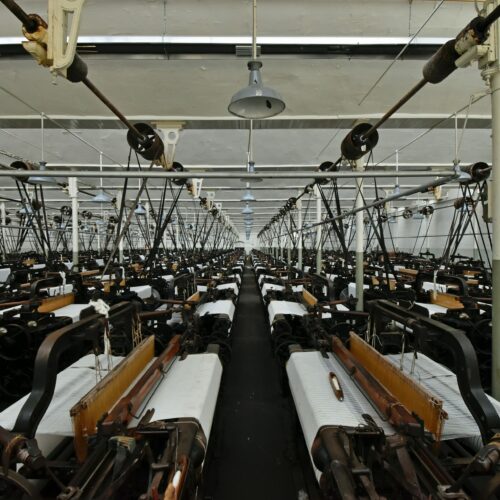
2. Cost-Effectiveness: Rising labor costs in traditional offshoring destinations, coupled with increased tariffs and transportation expenses, have eroded the cost advantages of overseas production. Onshoring allows companies to better control costs and improve profitability.
3. Quality Control: Local production enables manufacturers to maintain higher quality standards and ensure compliance with stringent regulations. This is particularly important in the textile industry, where product quality and sustainability are paramount.
Benefits of Reduced Supply Chain Risks and Faster Turnaround Times
Onshoring and reshoring offer several benefits that can significantly impact the textile industry:
1. Reduced Supply Chain Risks: By relocating production closer to home, companies can reduce their exposure to geopolitical tensions, transportation delays, and other disruptions. This leads to a more reliable and resilient supply chain.
2. Faster Turnaround Times: Local production allows for quicker response to market demands and faster delivery of products. This agility is crucial in the textile industry, where fashion trends and consumer preferences can change rapidly.
3. Improved Customer Satisfaction: Faster turnaround times and higher quality control contribute to better customer satisfaction. When products are delivered on time and meet quality expectations, customer loyalty and brand reputation are enhanced.
Reshaping the Textile Industry
The trend of onshoring and reshoring in the textile industry is reshaping the global production landscape. By bringing manufacturing processes closer to home, companies can achieve cost-effective, high-quality production while reducing supply chain risks and improving turnaround times. Svegea’s advanced machinery plays a pivotal role in supporting this transition, offering efficiency, sustainability, and flexibility to manufacturers.
Enabling Cost-Effective, High-Quality Production
Svegea, a leading provider of advanced textile machinery, plays a crucial role in supporting manufacturers as they transition to onshoring and reshoring. Svegea’s innovative equipment offers several advantages: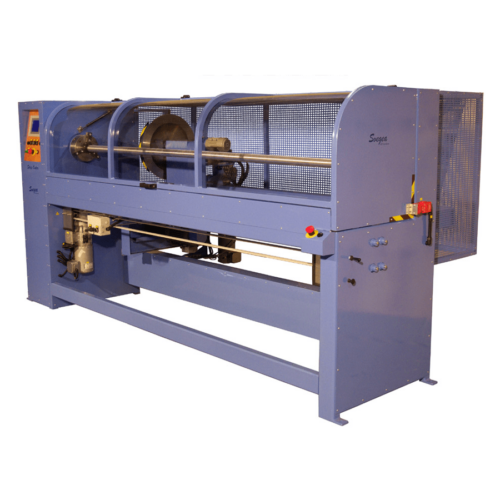
1. Efficiency and Automation: Svegea’s automated textile machines, such as the Fully Automatic Roll Slitting Machine, enhance production efficiency by minimizing waste and maximizing consistency. These machines are designed to handle large volumes quickly and reliably, helping manufacturers meet tight deadlines without compromising quality.
2. Sustainability: Modern textile machinery from Svegea is built with sustainability in mind. These machines consume less energy, use fewer chemicals, and produce less waste. For example, advanced dyeing machines from Svegea use less water and chemicals, reducing the environmental footprint of the dyeing process.
3. Flexibility: Svegea’s equipment is highly adaptable, allowing manufacturers to produce various materials and meet diverse client needs. This flexibility is essential for staying competitive in a rapidly evolving market.
As the textile industry continues to evolve, embracing onshoring and reshoring will be essential for staying competitive and meeting the demands of a dynamic market. To learn more about how Svegea’s machinery can help your business achieve its goals, visit www.svegea.se and contact Hakan Steene at h.steene@svegea.se for personalized assistance.
Photo by Remy Gieling on Unsplash | Photo by Geoff Oliver on Unsplash
The Impact of Fast Fashion vs. Slow Fashion
The fashion industry is at a crossroads. On one side, fast fashion dominates with its rapid production cycles, low-cost garments, and ever-changing trends. Conversely, slow fashion is gaining momentum, advocating for sustainability, ethical production, and long-lasting quality. Understanding the differences between these two approaches is crucial for consumers and manufacturers alike.
The Environmental and Social Implications of Fast Fashion
Fast fashion has revolutionized the industry, making trendy clothing accessible. However, this convenience comes at a significant cost.
Environmental Consequences
The fast fashion industry is one of the most significant contributors to pollution worldwid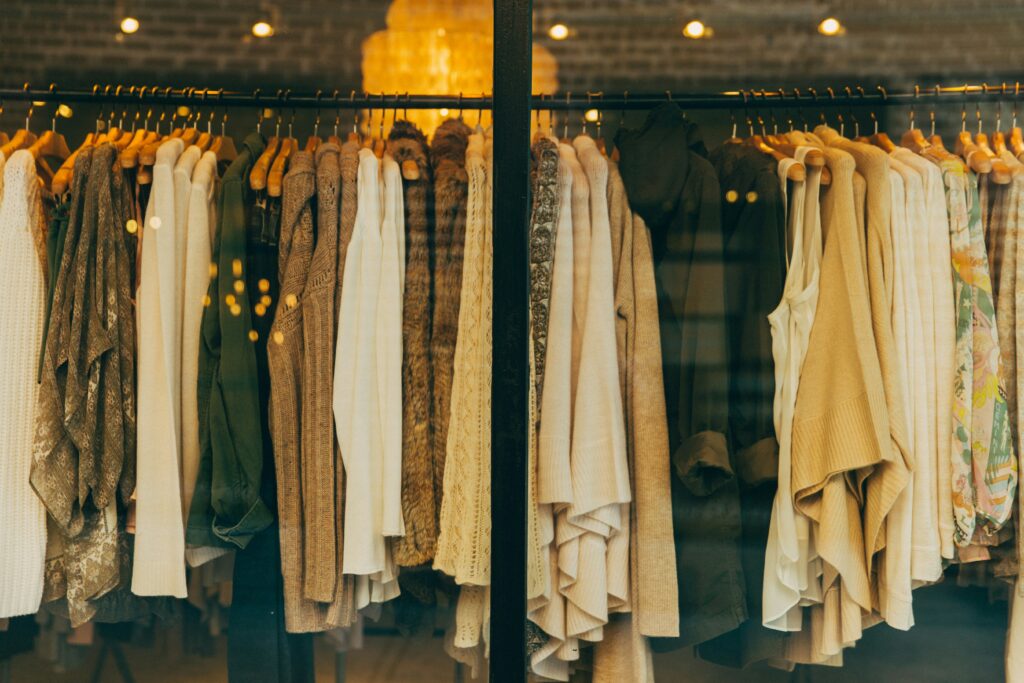 e. It generates excessive textile waste, consumes vast amounts of water, and releases harmful chemicals into the environment. Consider these alarming statistics:
e. It generates excessive textile waste, consumes vast amounts of water, and releases harmful chemicals into the environment. Consider these alarming statistics:
- The fashion industry accounts for 10% of global carbon emissions and produces 20% of global wastewater.
- A single cotton shirt requires 2,700 liters of water—enough to sustain one person for 2.5 years.
- Synthetic fibers used in fast fashion take up to 200 years to decompose.
These figures highlight the urgent need for sustainable alternatives.
Social Consequences
Beyond environmental concerns, fast fashion has severe social implications. Many garment factories operate under challenging conditions, where workers often receive wages that may not fully meet the cost of living. In regions like Bangladesh, where the textile industry is a vital economic driver, efforts continue to improve labor standards and create more sustainable working environments. Supporting ethical production and fair compensation remains essential in shaping a more responsible and equitable fashion industry.
The widespread demand for affordable clothing presents challenges in ensuring ethical labor practices. As the fashion industry evolves, businesses and consumers play a key role in promoting fair wages and responsible sourcing to create a more sustainable and equitable future.
Slow Fashion and Sustainability
Slow fashion prioritizes quality over quantity, focusing on durable, ethically produced garments. This movement is supported by innovative textile machines that enhance sustainability and efficiency.
Tips for Manufacturers Transitioning to Sustainable Practices
For manufacturers looking to embrace slow fashion, adopting sustainable practices is essential. Here are key strategies to facilitate the transition:
1. Optimize Energy Efficiency
Investing in energy-efficient textile machines can significantly reduce operational costs and environmental impact. Technologies such as variable frequency drives and energy recovery systems help minimize energy consumption.
2. Use Sustainable Raw Materials
Choosing organic cotton, recycled fabrics, and biodegradable materials can drastically reduce pollution and resource depletion. Sustainable sourcing ensures ethical production while maintaining high-quality standards.
3. Implement Waste Reduction Strategies
Advanced textile machines, like those from Svegea, help manufacturers cut fabric efficiently, reducing excess material waste. Additionally, adopting zero-waste design techniques can further minimize environmental impact.
4. Reduce Water Usage and Pollution
Traditional textile production consumes vast amounts of water. Modern dyeing machines now recycle water, significantly lowering consumption. Manufacturers should also explore low-impact dyeing techniques to reduce chemical pollution.
5. Promote Supply Chain Sustainability
Partnering with ethical suppliers and ensuring fair labor practices throughout the supply chain is crucial. Transparency in sourcing and production fosters consumer trust and strengthens brand reputation.
6. Foster a Culture of Sustainability
Educating employees and stakeholders about sustainable practices encourages long-term commitment to eco-friendly production. Companies should integrate sustainability goals into their business strategies to drive meaningful change.
Sustainable Textile Production
Svegea of Sweden specializes in innovative textile machinery that supports sustainable and efficient garment production. Their advanced solutions help manufacturers reduce waste and optimize processes by:
- Maximizing fabric usage through precision cutting and automation, minimizing material waste.
- Enhancing energy efficiency, reducing overall consumption and environmental impact.
- Improving garment durability, promoting longevity, and contributing to a circular economy.
By integrating Svegea’s technology, manufacturers can transition to eco-friendly production methods without compromising efficiency or profitability.
More than a Trend
The battle between fast fashion and slow fashion is more than a trend—it’s a movement toward a more sustainable future. While fast fashion continues to dominate, its environmental and social consequences cannot be ignored. Slow fashion, supported by innovative textile machines like those from Svegea of Sweden, offers a viable solution for manufacturers seeking ethical and sustainable production.
By adopting energy-efficient technology, sustainable materials, and waste reduction strategies, manufacturers can contribute to a greener industry while maintaining profitability. The shift toward slow fashion is not just necessary—it’s inevitable.
Let’s embrace sustainability and redefine the future of fashion. If you’re looking to enhance the productivity and sustainability of your garment production processes, reach out to Håkan Steene at h.steene@svegea.se to learn more about Svegea’s advanced textile machinery and solutions.
Image credits: Photo by Alina Bordunova on Unsplash | Photo by Hannah Morgan on Unsplash
The fashion industry is in the midst of a seismic shift. Consumers no longer settle for mass-produced garments—they crave unique, customized pieces that reflect their individuality. This surging demand is reshaping brand strategies, revolutionizing production, and redefining how we express ourselves through fashion.
The Rise of Personalized Fashion
Personalization isn’t a new concept—bespoke tailoring has been around for centuries. But thanks to groundbreaking technology, what was once an exclusive luxury is now accessible to the masses.
According to McKinsey’s The State of Fashion 2023 report, 71% of consumers expect brands to deliver personalized experiences, and 76% become frustrated when those expectations aren’t met. () This consumer-driven revolution is forcing the fashion industry to rethink everything, from design to production and delivery.
The Tech Behind the Transformation
Innovation is fueling the personalization boom. Here’s how cutting-edge technology is turning made-to-order fashion into a scalable, profitable reality:
3D Printing: Reinventing Manufacturing
Adidas is a pioneer in this space, integrating 3D printing into their Futurecraft line. Their custom midsoles adapt to individual foot pressure points and gait, providing unparalleled comfort and performance. But the potential extends beyond footwear—startups are now 3D-printing entire garment components, minimizing waste and unlocking design possibilities previously unimaginable.
AI & Machine Learning: Next-Level Personalization
Brands like Stitch Fix blend human stylists with AI-driven algorithms to curate hyper-personalized fashion recommendations. With over 4 million active users, Stitch Fix exemplifies how AI can decode individual style preferences with incredible accuracy.
Body Scanning: Precision Fit, Every Time
Uniqlo has introduced body scanning technology in select stores, allowing customers to create digital avatars for accurate sizing recommendations. This technology eliminates guesswork, reduces returns, and ensures a flawless fit.
The Machinery Powering Personalization
While digital advancements steal the spotlight, specialized machinery is the backbone of small-batch, custom production. One standout player in this arena is Svegea of Sweden.
Svegea’s Role in Personalized Fashion
Svegea, a leader in textile machinery manufacturing, develops precision bias-cutting machines that enable small-batch production without sacrificing quality. Their collarette cutting machines, crucial for trim and binding production, make detailed customization viable at scale.
Automation: The Secret to Scalable Customization
Contrary to popular belief, automation isn’t the enemy of personalization—it’s the key to making it efficient.
Smart Factories: Rapid, Flexible Production
Advanced robotics and computer-controlled cutting systems can switch between personalized designs seamlessly, drastically cutting lead times. What once took weeks can now be produced in days, meeting consumer expectations for speed and exclusivity.
On-Demand Manufacturing: Redefining Fashion’s Business Model
The traditional model of mass-producing inventory is fading. Instead, agile, on-demand production is emerging as the future.
- Made-to-Order Success Stories: Companies like Proper Cloth create perfectly tailored shirts based on individual measurements, eliminating inventory waste and boosting customer satisfaction.
- Microfactories for Localized Production: The concept of small, tech-powered production hubs is gaining traction. According to Fashion for Good, micro-factories can reduce carbon emissions by up to 35% compared to traditional supply chains.
Why Consumers Love Customization
Beyond the cool factor, there are deeper reasons why personalized fashion is taking over:
1. A Unique Identity
In a world of fast fashion, standing out is more important than ever. Studies show that 80% of consumers are more likely to buy from brands that offer personalized experiences.
2. The Perfect Fit
Sizing inconsistencies have plagued shoppers for decades. Custom-fitted clothing eliminates this issue, reducing costly returns—an issue that costs the fashion industry $300 billion annually.
3. Sustainability at Its Core
Personalized fashion isn’t just stylish—it’s eco-friendly.
- Less Waste: On-demand production slashes overproduction and reduces landfill-bound inventory.
- Longer Wear: Research suggests personalized items stay in a consumer’s wardrobe up to 50% longer than mass-produced alternatives.
Brands Leading the Charge
Several fashion giants are proving that personalization isn’t just a gimmick—it’s a game-changer.
- Nike By You (formerly NIKEiD) allows customers to customize every element of their sneakers, adding over $1 billion in direct-to-consumer revenue.
- Ministry of Supply offers 3D-printed knit blazers, tailored to individual measurements in under 90 minutes.
- Unspun uses body scanning to create zero-inventory, custom-fit jeans, reducing carbon emissions by up to 40%.
Challenges & The Future of Personalized Fashion
Despite its rapid growth, personalized fashion isn’t without obstacles:
- Cost & Scaling: Custom production is still pricier than mass manufacturing, but as technology advances, costs are dropping—Deloitte reports a 30% decrease in price premiums for personalized products over the past decade.
- Consumer Awareness: Many shoppers still see personalization as a luxury. Brands must invest in educating consumers on its accessibility and long-term value.
The Future: Customization as the New Norm
Fashion’s transformation is just beginning. As technology evolves, personalized fashion will become an everyday expectation rather than an exclusive option. Brands that embrace this shift will benefit from stronger customer loyalty, reduced waste, and a more sustainable future.
The era of mass-produced fashion is fading. In its place? A world where every piece of clothing tells a unique story—your story.
Photo by Malicki M Beser on Unsplash
As we step into 2025, the textile manufacturing industry is poised for significant transformations. Driven by technological advancements and evolving consumer demands, the industry is embracing new trends that promise to reshape the landscape. This blog explores the key textile trends for 2025, highlighting how innovative solutions are leading the charge.
Sustainability Takes Center Stage
Sustainability continues to be a dominant trend in textile manufacturing. Consumers are increasingly demanding eco-friendly products, pushing manufacturers to adopt sustainable practices. In 2025, we will see a rise in the use of organic and recycled materials, such as organic cotton, bamboo, and Tencel. These materials are not only environmentally friendly but also offer superior quality and comfort.
Moreover, manufacturers are focusing on reducing their carbon footprint by optimizing production processes and minimizing waste. Advanced textile machinery, such as cutting-edge collarette cutting systems, exemplifies this commitment to sustainability. These systems reduce fabric waste and enhance production efficiency, aligning with the industry’s green goals.
The Rise of Smart Textiles
Smart textiles are revolutionizing the industry by integrating advanced technology into fabrics. These textiles can monitor health, regulate temperature, and even change color based on environmental conditions. In 2025, we expect to see more widespread adoption of smart textiles in various applications, from fashion to healthcare.
Innovative solutions are at the forefront of this trend. Automated systems, like advanced roll-cutting/slitting machines, incorporate cutting-edge technology to enhance precision and efficiency. These advancements not only improve product quality but also open new possibilities for smart textile applications.
Digital Printing Innovations
Digital printing is transforming textile design by allowing for greater creativity and customization. Traditional printing methods are being replaced by digital techniques that enable intricate designs and vibrant colors. This trend is expected to grow in 2025, with more manufacturers adopting digital printing to meet consumer demands for unique and personalized products.
Precise cutting capabilities, offered by advanced strip cutters, ensure that digitally printed fabrics are handled with the utmost care and accuracy. These innovations are integral to maintaining the quality and appeal of digitally printed textiles.
Advanced Apparel Manufacturing
The apparel manufacturing sector is experiencing a shift towards automation and advanced technologies. In 2025, we will see increased use of AI and robotics to streamline production processes and reduce labor costs. These technologies enhance efficiency, improve product quality, and enable manufacturers to respond quickly to market changes.
Automated sewing units simplify the production of bias binding, reducing the need for manual intervention and increasing overall productivity. By leveraging such advanced machinery, manufacturers can stay competitive in a rapidly evolving market.
Customization and Personalization
Consumers are seeking more personalized products, driving the trend toward customization in textile manufacturing. In 2025, manufacturers will leverage AI and data analytics to offer tailored solutions that meet individual preferences. This trend is particularly evident in the fashion industry, where personalized clothing and accessories are becoming increasingly popular.
Innovative textile machinery can be tailored to meet specific production needs, ensuring that manufacturers can deliver unique products that resonate with their customers.
Sustainable Supply Chains
Sustainability extends beyond materials and production processes to encompass the entire supply chain. In 2025, we will see a greater emphasis on creating sustainable supply chains that minimize environmental impact and promote ethical practices. This includes sourcing raw materials responsibly, reducing transportation emissions, and ensuring fair labor practices.
Innovative solutions help manufacturers optimize their supply chains, reducing waste and improving efficiency. By adopting these advanced technologies, companies can enhance their sustainability efforts and meet the growing demand for eco-friendly products.
3D Technologies
3D technologies are making waves in textile manufacturing by enabling the creation of complex designs and prototypes. In 2025, we will see more manufacturers adopting 3D printing and other advanced techniques to push the boundaries of textile design. These technologies allow for greater experimentation and innovation, resulting in unique and high-quality products.
Cutting-edge machinery supports the integration of 3D technologies into textile production. These machines precisely cut and slit 3D-printed fabrics, handling them with care and accuracy.
Immersive Fashion
Immersive fashion is an emerging trend that combines technology and design to create interactive and engaging experiences. In 2025, we will see more brands exploring immersive fashion through augmented reality (AR) and virtual reality (VR) technologies. These innovations allow consumers to visualize and interact with products in new and exciting ways.
Advanced textile machinery supports the production of immersive fashion by enabling precise and efficient manufacturing processes. These innovations ensure that manufacturers can stay ahead of the curve and deliver cutting-edge products to their customers.
A Transformative Era
The textile manufacturing industry is on the cusp of a transformative era, driven by technological advancements and changing consumer demands. Trends such as sustainability, smart textiles, digital printing, and advanced manufacturing are reshaping the landscape, offering new opportunities for innovation and growth.
Innovative textile machinery is setting new standards in the industry. As we move into 2025, manufacturers must embrace these trends to stay competitive and meet the evolving needs of their customers.
For more information on how advanced solutions can help your business thrive, contact Håkan Steene at h.steene@svegea.se today!
Artificial Intelligence (AI) is emerging as a game-changer in the ever-evolving landscape of textile manufacturing. From design to production, AI is revolutionizing the industry, enhancing efficiency, reducing waste, and driving innovation. This blog delves into how AI is transforming textile manufacturing, spotlighting Svegea’s innovative solutions.
The Role of AI in Textile Manufacturing
AI is making significant strides in various aspects of textile manufacturing. One of the most notable areas is automated design and pattern-making. AI tools like Adobe’s Textile Designer analyze vast amounts of trend data from fashion shows, online retail platforms, and consumer behavior studies. This analysis helps predict future trends in patterns, colors, and materials with high accuracy, enabling designers to create collections that align closely with market demands.
Moreover, AI is enhancing the fabric inspection process. Advanced systems equipped with high-resolution cameras and sophisticated AI software, such as the Uster Quantum 4.0, conduct real-time textile analysis. These systems meticulously scan for defects like misweaves, pattern irregularities, and color deviations, ensuring only top-quality fabrics move forward in the production line. This precision significantly reduces waste and elevates product quality.
Enhancing Manufacturing Efficiency
AI-driven automation is streamlining textile manufacturing processes. Predictive maintenance, for instance, uses AI to foresee equipment failures before they happen, minimizing downtime and repair costs. Advanced AI-powered robotics and automation streamline tasks such as fabric cutting, sewing, and quality inspection, leading to faster production cycles and reduced labor costs.
Svegea, a leader in textile manufacturing solutions, exemplifies the integration of AI in production. Their EC-450XF Collarette Cutting System, recognized with the Texprocess Americas 2023 Innovation Award, achieves unparalleled precision and efficiency. This system, along with other advanced machines like the SWS automatic roll cutting/slitting machines and the Strip Cutter CMS-1800A3, showcases Svegea’s commitment to cutting-edge technology.
Optimizing Supply Chains
AI plays a crucial role in optimizing supply chains within the textile industry. Machine learning models predict demand patterns, allowing manufacturers to adjust production schedules and inventory levels accordingly. AI-driven analytics also help identify the most efficient routes for shipping and logistics, reducing transportation costs and carbon footprint. This level of optimization ensures that products reach consumers promptly, enhancing customer satisfaction.
Revolutionizing Quality Control
Quality control is a critical aspect of textile production, and AI is enhancing this process through advanced inspection technologies. Computer vision systems equipped with AI algorithms can detect defects and inconsistencies in fabrics with high precision. These systems analyze images of textiles in real time, identifying issues such as color variations, weave irregularities, and fabric flaws that might be missed by human inspectors. This results in higher quality products and fewer returns.
Personalizing Consumer Experiences
AI is transforming how brands interact with consumers by enabling personalized shopping experiences. AI-powered recommendation engines analyze user behavior, purchase history, and preferences to offer tailored product suggestions. Virtual fitting rooms, driven by AI, allow customers to try on clothes virtually, enhancing the online shopping experience and reducing the likelihood of returns.
Svegea’s Innovative Solutions
Svegea of Sweden AB stands out as a beacon of innovation in textile manufacturing. With over 72 years of experience, Svegea offers a wide array of products and services that redefine the textile landscape. Their product portfolio includes the Tube Sewing Unit 200A, Roll to Roll Slitter RRS 800, and Strip Cutter FA 600, all designed for exceptional performance and efficiency.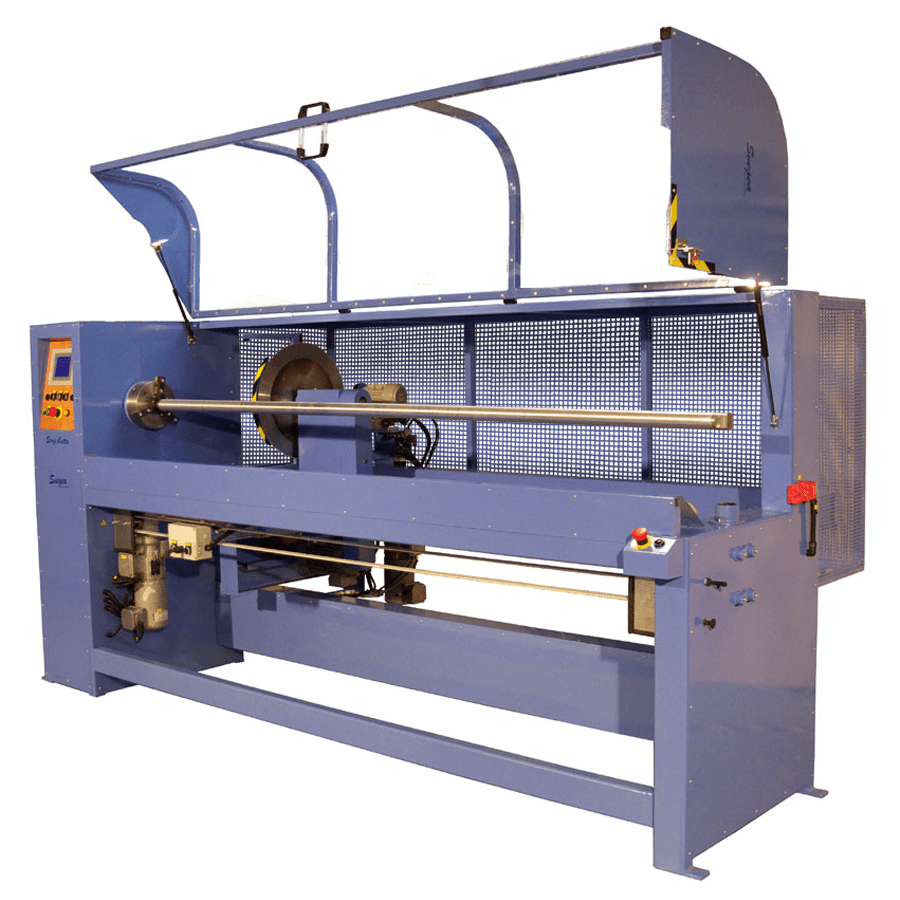
Svegea’s commitment to cutting-edge technology is evident in its award-winning products. The EC-450XF Collarette Cutting System, for example, sets new benchmarks in production excellence. Svegea’s global presence and bespoke services ensure that each solution addresses specific client needs, ensuring customer satisfaction and success.
The Future of AI in Textile Manufacturing
The integration of AI in textile manufacturing is just beginning. As technology continues to advance, we can expect even greater efficiencies and innovations. AI will likely play an increasingly important role in areas such as sustainable production, where it can help reduce waste and optimize resource use.
AI is revolutionizing textile manufacturing, driving efficiencies, and fostering innovation. Companies like Svegea are leading this transformation, offering advanced solutions that set new industry standards. As AI continues to evolve, the future of textile manufacturing looks brighter than ever. To learn more about how Svegea can help your business stay ahead of the curve, contact Håkan Steene at h.steene@svegea.se today!


